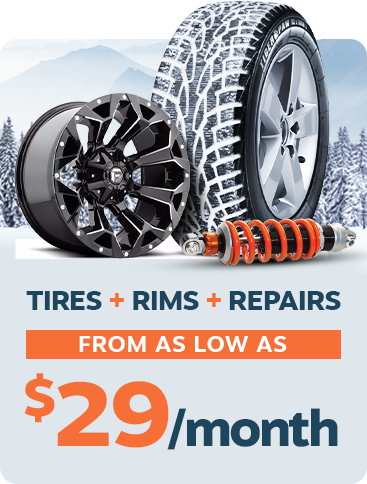Old tires can lead to trouble
The number 1 reason for roadside assistance calls!
Old Tires can lead to trouble
Recent news reports about old tires failing has experts asking if tires should have expiration dates the same as many other products. Why? Because old tires are failing and killing people!
In a letter released September 22, 2003, a private safety group called Strategic Safety asked the National Highway Traffic & Safety Admin. (NHTSA) to investigate the problem of tire ageing. The group says they have documented at least 20 accidents caused by old tires blowing out, 10 of which resulted in fatalities. Most of the lawsuits involving these tread separation accidents have been on tires that were six or more years old.
The group says the NHTSA should have a new rule requiring tire manufacturers to put expiration dates on all new tires.
REPLACE OLD TIRES
Strategic Safety says based on their findings, motorists should replace tires that are more than ten (10) years old, including their spare tire.
(Note: In Europe, vehicle manufacturers typically recommend replacing tires that are more than six (6) years old.)
The group also says tire retailers should NOT sell tires that have been in storage for more than six years since the date of manufacture.
Tires deteriorate over time, even if they are not used or driven on. The tires may appear to be in like-new condition on the outside, but inside the rubber is slowly deteriorating. This may dangerously weaken the tire and increase the risk of a blowout at high speed or during hot weather.
In one such incident, the owner of a 1964 Sunbeam Tiger was returning from an antique car show. The tires only had 4,000 miles on them and looked good as new on the outside, but the tires were 11 years old. On the way home, one of the tires blew out causing the car to crash. The passenger suffered permanent brain injuries as a result of the accident.
NO TIRE EXPIRATION DATES
The Rubber Manufacturers Association, to which tire manufacturers belong, has responded by saying tire expiration dates may be hard to determine because there are so many variables that affect tire ageing. “It’s not so simple to just slap a date on it,” said Dan Zielinski, a spokesman for the Rubber Manufacturers Association.
Zielinski said a discussion of expiration dates would be worthwhile, but said NHTSA should not act without collecting some solid scientific evidence. Zielinski said tire manufacturers worry that consumers wouldn’t pay any attention to an expiration warning anyway and would not replace old tires with new ones. “People might think, ‘Here’s the tire industry trying to get us to buy more tires by stamping a date on them,'” he said.
NHTSA issued new tire performance standards in June 2003 but put off an ageing test because experts couldn’t agree on how to conduct such a test. NHTSA spokesman Rae Tyson said the agency hopes to have a new proposal on tire ageing at some point in the future.
Tire makers say expiration dates would complicate their distribution systems because new tires often sit on shelves for two years or more. They also say tires vary in chemical makeup, so one expiration date would not fit all tires. The National Highway Traffic Safety Administration says additional research is needed to come up with an appropriate ageing test for tires.
DETERMINING TIRE DATE CODES
How old are the tires on your vehicle? The date of manufacture is indicated by the last group of digits in the DOT manufacture code on the sidewall of the tire. The number is often stamped in a recessed rectangle. The DOT code tells who manufactured the tire, where it was made and when. The last group of digits in the code is the date code that tells when the tire was made.
Before 2000, the date code had three digits. Since 2000, it has had four. The first two digits are the week of the year (01 = the first week of January). The third digit (for tires made before 2000) is the year (1 = 1991). For most tires made after 2000, the third and fourth digits are the year (04 = 2004).
The date of manufacture is essential information for car owners and tire buyers because tires deteriorate even if they are not used. European automobile manufacturers recommend replacing ANY tire that is more than six (6) years old, including the spare tire. No such recommendations have yet been made by domestic vehicle manufacturers.
CHECKING TIRE WEAR
Tires have wear bars (flat spots) in the tread grooves to visually indicate wear. If the tread is worn down so the wear bars are flush with the surrounding tread, the tire is worn out and needs to be replaced. If you see cords showing through the rubber, the tire is unsafe to drive on and is on the verge of failure. Replace the tire without delay! The same advice goes for any tire that has bulges, deep cracks or the tread is separating from the casing.
What a professional Tire Dealer Should Do
Auto service facilities and tire dealers should employ the following tips to help prevent customers from experiencing tire failure from aged tires:
� Store tires in a cool climate away from sunlight.
� Determine age of tires.
� Implement a “first in-first out” rotation strategy.
� Check the age of all tires both serviced and sold.
� Check existing tire inventory and new tire shipments. Tires that are past the manufacturer’s service life should be returned.
� Make sure all technicians are properly educated on tire ageing.
� Educate your customers on tire ageing and the importance of having good tires on your vehicle.
� Recommend that customers replace aged tires.



